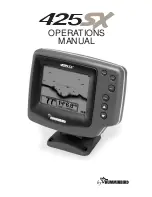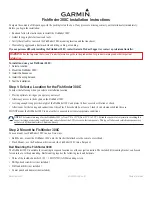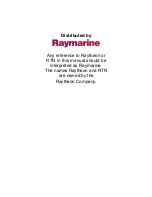
depiction of these objects varies with boat speed and direction. The best way to
learn to interpret structure is to operate the
425SX
over a variety of known
conditions and experiment with user functions to best represent those
conditions on-screen.
Surface Clutter.
Surface clutter is the layer of water near the surface that is rich
in algae and other growth, and often is aerated by wind or wave action. This
area of water interferes with sonar transmission and often appears on-screen as
regular clusters of individual dots near the “0” line.
Thermoclines.
Thermoclines are sharp differences in water temperature. These
are easily identified by the continuous nature of the return.
Second Returns.
When a
sonar signal is reflected off the
bottom back to the transducer,
there is often enough energy
left in the signal to be reflected
off the surface of the water
back to the bottom a second
time. Second returns appear as
a slightly weaker bottom
representation exactly twice the
depth of the primary bottom
return. The second return is
most likely to occur in shallow
water and in areas of relatively
hard bottom.
Fish Arches.
With Fish ID off, schools of bait fish as well as individual fish
are clearly visible on the
425SX
display. Bait fish appear as "clouds" having
different shapes and sizes depending on the number of fish and boat
speed. Individual fish appear as smaller black and gray lines often
appearing as a "fish arch." A fish arch forms as the boat moves over the
fish. Due to the transducer beam angle the distance to the fish decreases
as it moves into the beam, and then increases as it moves out. When the
window graphs this distance change, an arch appears. The true depth of
the fish is the top of the arch when the boat is directly over the fish. Boat
10
USING THE
425SX
WHAT YOU SEE ON SCREEN
Thermocline Second Return






























